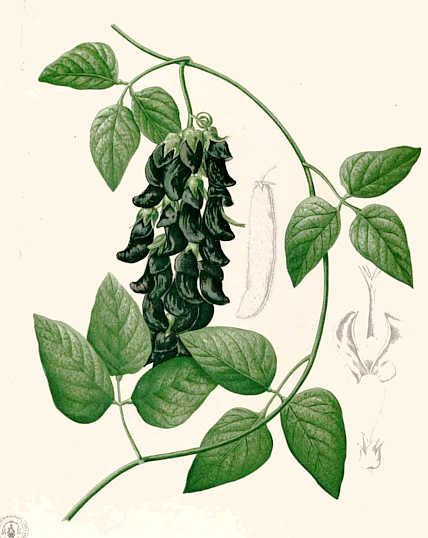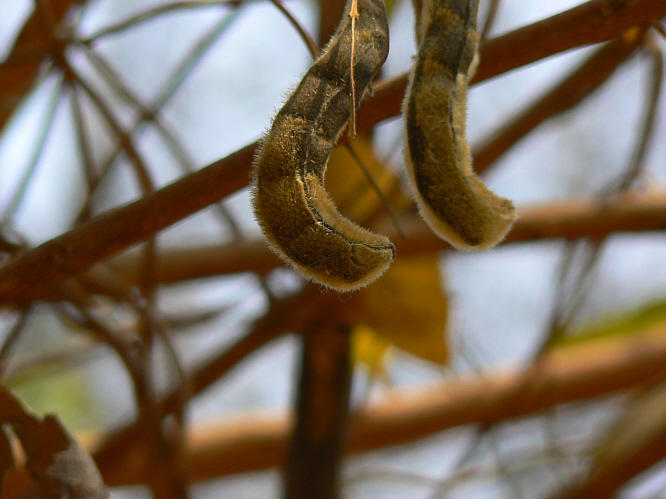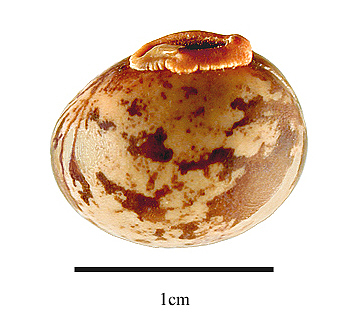

Zitierweise / cite as:
Carakasaṃhitā: Ausgewählte Texte aus der Carakasaṃhitā / übersetzt und erläutert von Alois Payer <1944 - >. -- Anhang A: Pflanzenbeschreibungen. -- Mucuna pruriens (L.) DC. -- Fassung vom 2007-07-13. -- URL: http://www.payer.de/ayurveda/pflanzen/mucuna_pruriens.htm
Erstmals publiziert: 2006-07-13
Überarbeitungen:
Anlass: Lehrveranstaltung SS 2007
©opyright: Dieser Text steht der Allgemeinheit zur Verfügung. Eine Verwertung in Publikationen, die über übliche Zitate hinausgeht, bedarf der ausdrücklichen Genehmigung des Verfassers
Dieser Text ist Teil der Abteilung Sanskrit von Tüpfli's Global Village Library
WARNUNG: dies ist der Versuch einer
Übersetzung und Interpretation eines altindischen Textes. Es ist keine
medizinische Anleitung. Vor dem Gebrauch aller hier genannten Heilmittel wird
darum ausdrücklich gewarnt. Nur ein erfahrener, gut ausgebildeter ayurvedischer
Arzt kann Verschreibungen und Behandlungen machen!
Falls Sie die diakritischen Zeichen nicht dargestellt bekommen, installieren Sie eine Schrift mit Diakritika wie z.B. Tahoma.
Verwendete und zitierte Werke siehe: http://www.payer.de/ayurveda/caraka0001.htm

Abb.: Mucuna pruriens (L.) DC.
[Bildquelle: Wikipedia]

Abb.: Mucuna pruriens (L.) DC.
[Bildquelle: Wikipedia]

Abb.: Mucuna pruriens (L.) DC.
[Bildquelle:
dinesh_valke. --
http://www.flickr.com/photos/dinesh_valke/488059664/. -- Zugriff am 2007-07-13.
--
![]()
![]()
![]() Creative
Commons Lizenz (Namensnennung, keine kommerzielle Nutzung, keine Bearbeitung)]
Creative
Commons Lizenz (Namensnennung, keine kommerzielle Nutzung, keine Bearbeitung)]

Abb.: Samen von Mucuna pruriens (L.) DC. var. utilis
[Bildquelle:
http://www.ars-grin.gov/npgs/images/sbml/Mucuna_pruriens_var._utilis_seed.jpg.
-- Public domain]
Drury:
"Mucuna prurita (Hook.) Do. Cowhage, Eng. Naicorma, Mai.. Poonaykalie, Tam. Peeliadagoo kaila, Tel. Kiwach, Hind. Kanchkoorie, Duk. Alkushee, Beng.
Description.—Annual, twining; branches pubescent or slightly hairy; leaves pinnately trifoliolate; leaflets ovate, upper side glabrous, under sprinkled with adpressed silvery hairs; racemes shorter than the leaves, drooping; pedicels shorter than the calyx; calyx: cleft to the middle, white with adpressed hairs, segments broad-lanceolate; corolla papilionaceous ; vexillum cordate, incumbent on the alae, alae oblong-linear, sometimes slightly cohering, keel straight below, slightly falcate in the upper part, terminated by an acute beak ; legume slightly curved like an S, densely clothed with rigid stinging hairs, 6-seeded ; flowers large, dark purple. Fl. Dec.—Feb.— W. & A. Prod. i. 255.—Carpopogon pruriens, Roxb.—Rheede, viii. t. 35.------Peninsula. Bengal. Dheyra Dhoon.
Medical Uses.—The root in infusion is administered in cholera, and a syrup thickened with the hairs till it is of the consistence of honey is prescribed by European practitioners as a good anthelmintic ; but the natives do not use the stinging hairs of the pods for this purpose. There is no doubt, Ainslie observes, but that it is simply by these mechanical means that the hairs act in worm cases. Neither the tincture nor decoction has the same effect. If the pods are incautiously touched, they will cause an intolerable itching in the fingers. In the West Indies a decoction of the root is reckoned a powerful diuretic and cleanser of the kidneys, and is also made into an ointment for elephantiasis. The leaves are applied to ulcers, and the beans reckoned aphrodisiac. . A vinous infusion of the pods (12 to a quart) is said to be a certain remedy for the dropsy.—Ainslie,. Rheede.
Economic Uses.—The seeds of many species are edible, and reckoned equal to the English bean. Among these may be enumerated the M. monosperma (Dec), known as the Negro Bean, a favourite vegetable with Brahmins; the M. nivea is also cultivated, the tender fleshy pods of which, when stripped of their exterior skin, make a most excellent vegetable for the table, scarcely inferior to the garden-bean of Europe. The present species is a native of both Indies. The seed is said to absorb the poison of scorpions, and to remain on the sting until all is removed.—Powell's Punj. Prod. Roxb."
[Quelle: Drury, Heber <1819 - 1872>: The useful plants of India : with notices of their chief value in commerce, medicine, and the arts. -- 2d ed. with additions and corrections. London : Allen, 1873. -- xvi, 512 p. ; 22 cm. -- s.v.]
Dutt:
"MUCUNA PRURIENS, DC. Sans. Ātmaguptā Kapikachchhu. Vānari.
Vern. Ālkusi, Beng. Kiwach, Hind.
The English names Cowage or Cowitch are derived from the Hindi Kiwach. The plant is indigenous to India and has been used in Hindu medicine from a very ancient period. Susruta describes the seeds as a powerful aphrodisiac, and gives the following formula for their use. Take of the seeds of Mucuna pruriens and the fruits Tribulus terrestris (gokshura) equal parts and administer in doses of about a drachm with sugar and and tepid milk. The Bhāvaprakāśa recommends the following preparation called Vānari vati. Take of the seeds of Mucuna pruriens thirty-two tolās, boil them in four seers of cow's milk till the latter becomes thick. The seeds should now be decorticated and pounded, then fried in clarified butter and made into a confection with double their weight of sugar. The mass should then be divided into balls which should be steeped in honey. Dose, about a tola. This preparation is said to be the best of aphrodisiacs.
The root of Mucuna pruriens is considered tonic and useful in diseases of the nervous system, such as facial paralysis, hemiplegia etc. It is generally used in combination with other medicines of its class, as for example in the compound decoction called Māshbalādi, for which see Assafoetida."
[Quelle: Dutt, Uday Chand: The materia medica of the Hindus / Uday Chand Dutt. With a glossary of Indian plants by George King. -- 2. ed. with additions and alterations / by Binod Lall Sen & Ashutosh Sen. -- Calcutta, 1900. - XVIII, 356 S. -- S. 147f.]